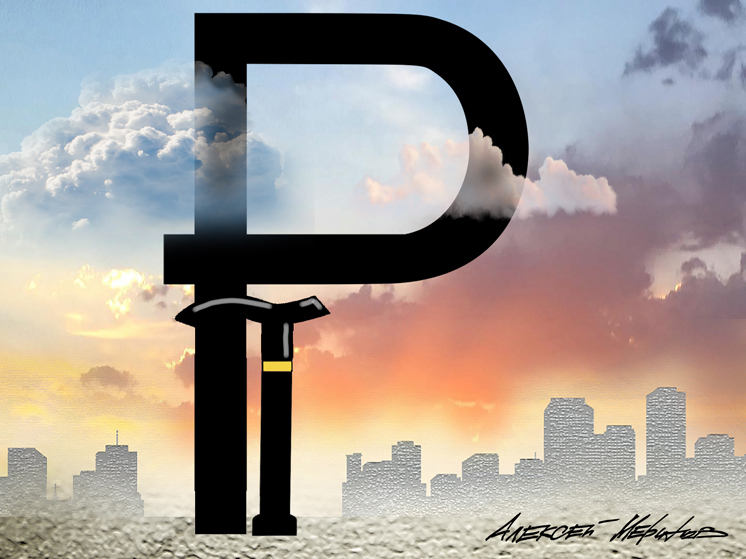Factors that will push the national currency down have been named
A surprisingly bold and generally favorable forecast for the ruble exchange rate was given by analysts from the Ministry of Economic Development, given that they managed to look right into 2026, when, according to their vision, the dollar will cost an average of 92.3 “wooden”. I would like to believe, of course, but a lot can happen over the next three years — in geopolitics, in financial markets, with inflation, and with the export of Russian energy resources.

As Maxim Reshetnikov’s department suggests, “by the end of 2023, the pressure on the trade balance and the ruble exchange rate from foreign trade will gradually weaken.” Moreover, “since June, there has been a reversal in the situation on the world commodity markets — an increase in prices for oil and a number of other export goods.” In its forecast of socio-economic development, the Ministry of Energy provides the following figures at the average annual dollar exchange rate: 2023 — 85.2 rubles, 2024 — 90.1, 2025 — 91.1, 2026 — 92.3. Moreover, in June 2024, the ruble will strengthen to 87.5 for an “American” and to 97.5 for a “European”, the ministry believes. That is, in the next 9 months our national currency should strengthen by almost 9 rubles to the dollar. Analysts expect the ruble to be helped by «increased foreign currency inflows into the current account along with the continued diversification of its currency structure.»
All this is wonderful, but there are certain circumstances that cast doubt on the adequacy of the forecasts from the Ministry of Economic Development. To put it simply, nothing so far indicates that Russia will suddenly begin to export more of its own goods and import less of foreign ones. The bias towards imports remains, and a serious one at that. Accordingly, the country receives significantly less currency from “unfriendly” states, which undermines the ruble exchange rate and accelerates consumer prices.
“It’s a strange forecast, it’s unclear what it’s based on, with unclear goals,” says Alexey Vedev, director of the Center for Structural Research at RANEPA, perplexed. – The main goal of the medium-term government forecast is to set trends and guidelines for the budget, business, market players, and the population. And here we see numbers with tenths of a percent, which are too accurate to comment on. It would be much more logical if the Ministry of Economic Development spoke about the currency corridor, and not about absolute values. For example, that at some point in 2024 the ruble will leave the 95-100 corridor and settle within 85-90. By the way, then the prolonged effect of raising the key rate of the Bank of Russia will appear, and other regulatory measures from the Central Bank and the Ministry of Finance may play a role.”
According to financial analyst Sergei Drozdov, it’s definitely not worth relying on the figures from the Ministry of Economic Development: roughly speaking, according to the expert, they are made up from thin air and resemble some kind of order. Like, we were tasked with making a forecast, and we completed the task. In fact, over the next three and a half years, the ruble exchange rate may either strengthen or decline significantly. In the first case, under the influence of administrative steps on the part of the monetary authorities, who are quite capable of driving the Russian currency into the framework required by the state. In the second case, if, for example, the geopolitical situation worsens.
“Reaching 87.5 per dollar by mid-2024 seems to be an overly optimistic scenario,” says BitRiver financial analyst Vladislav Antonov. — It looks more realistic to fix the exchange rate in the range of 90-95 per dollar if the situation on world markets stabilizes and there are no new external shocks for Russia. Of course, the expected rise in prices for oil and other export goods of the Russian Federation will increase the influx of foreign exchange earnings into the country, which will be a positive factor for the ruble. However, this is unlikely to outweigh the existing risks. These include high inflation, which undermines the competitiveness and investment attractiveness of the Russian economy. The Central Bank's ability to increase reserves is limited by ongoing sanctions and limited access to global capital markets. In addition, the economy remains structurally dependent on commodity exports, which is exacerbated by the weakness of the manufacturing industry.
“To a large extent, the stability of our national currency is hampered by the outflow of funds to the foreign market,” says Artem Deev, head of the analytical department at AMarkets. — This is due to many gray schemes in export and import. If the state manages to establish monitoring in this area and take control of cash flows, then the ruble in 2024 really has some chance of reaching the level predicted by the Ministry of Economy.”


